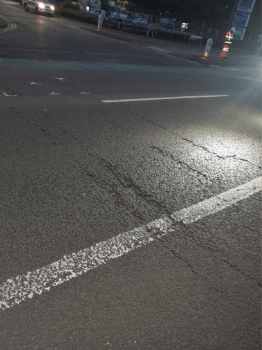Why Repair Cracks with Jointmaster?
Why Repair Cracks with Jointmaster?
Why do cracks lead to potholes?
Cracks in asphalt might seem minor, but left untreated they inevitably worsen—progressing into potholes and structural failures that are significantly more expensive to repair.
It's widely accepted in the highways industry: asphalt doesn’t last forever. Over time, tension builds both at the surface and deep within the asphalt layers, meaning cracks can form from either direction—top-down or bottom-up.
Once a crack appears, the biggest threat isn’t the crack itself, but what gets in. Water infiltration is the most common trigger for accelerated surface damage. When water seeps into the cracks and is subjected to freeze–thaw cycles, it expands and contracts, undermining the surrounding material. The result: further deterioration, ravelling, and eventually potholes.
As pavement engineers know, water is the enemy of asphalt.
Timely crack repairs, especially when performed with flexible, long-lasting systems that accommodate movement, can:
- Seal against water ingress
- Prevent pothole formation
- Extend the pavement’s service life
- Reduce whole-life maintenance costs
Treating cracks early is one of the most cost-effective interventions available. It protects the structural integrity of the surface course, helping it achieve—and occasionally exceed—its original design life
Read the article here on pothole formation, experiments and theory by Nick Thom, University of Nottingham publish in April 2014
Pothole formation: experiments and theory
Why repair cracks?
Cracks are one of the earliest warning signs of road deterioration. If left untreated, they can lead to costly potholes and premature surface failure. Timely crack repairs are essential for preserving the structural integrity and extending the life of your asset.
What Causes Cracks in Roads?
Cracks form due to a combination of physical, environmental, and mechanical stresses:
- Temperature fluctuations
Roads naturally expand and contract with heat and cold. Over time, this repeated movement causes the surface to fracture. - Heavy traffic loads
Constant pressure from heavy vehicles leads to pavement fatigue, especially in high-volume or industrial routes. - Moisture ingress
Water from rain or groundwater weakens the underlying layers of the road. Once water penetrates through cracks, it accelerates the rate of deterioration—especially during freeze–thaw cycles. - Poor construction or design
Inadequate drainage, insufficient base strength, or low-grade materials can all lead to premature cracking.
The Risk of Doing Nothing
Cracks may seem minor, but they act as open gateways for water and debris. If not repaired early, they develop into potholes and structural failures—leading to expensive resurfacing or full-depth repairs. The longer you wait, the more damage (and cost) accumulates.
The Value of Timely Crack Treatment
✅ Prevents water ingress
✅ Preserves the surface course
✅ Extends pavement life
✅ Delays costly resurfacing
✅ Maintains safety and ride quality
By sealing cracks early using proven, flexible systems, you protect your road asset—and your maintenance budget.

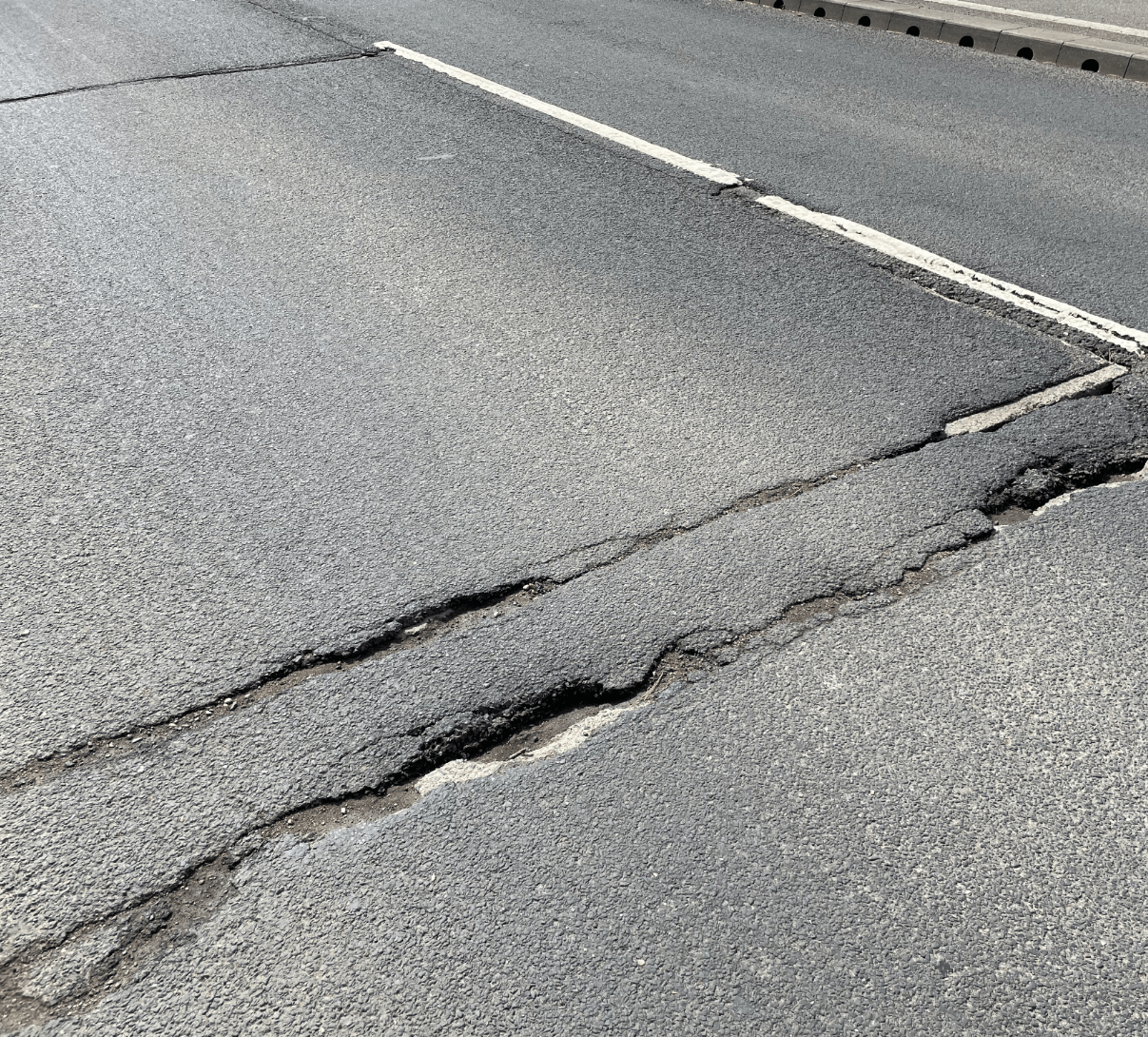
Crack repairs that Prevent Potholes:
Crack sealing is a proven and cost-effective method for protecting road surfaces—used primarily to prevent water ingress and stop cracks from developing into potholes. It is widely recognised across the highways industry as the first line of defence in maintaining road condition and extending pavement life.
At Rhino, we use Jointmaster, the UK’s leading crack and joint repair system, specifically engineered for use on high-speed roads, motorways, and heavily trafficked networks. Independently tested and BBA HAPAS-approved, Jointmaster delivers a flexible, durable, and long-lasting seal that moves with the road and resists further deterioration.
By sealing cracks early, you:
Prevent pothole formation
Stop water and debris from weakening the structure
Preserve the surface course
Reduce long-term maintenance costs
Crack repairs aren’t a patch—they’re a plan. And Jointmaster is built to deliver.
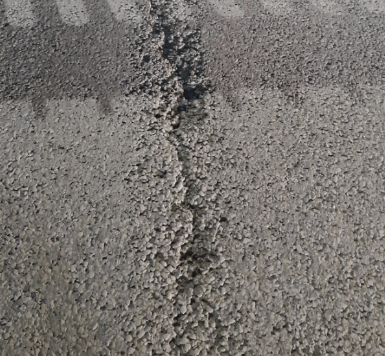
Accommodating Movement in Road Surfaces
Cracks form when a road surface is too stiff to absorb natural movement—whether from traffic loading, temperature changes, or sub-surface shift. Over time, this inflexibility leads to surface failure.
Jointmaster is specifically designed to solve this problem.
The system uses a highly polymerised, flexible bituminous binder, combined with carefully selected graded aggregates, to create a durable, resilient repair that:
- Absorbs surface movement
- Resists cracking and deformation under traffic
- Maintains a watertight seal over time
Jointmaster can be installed either as a rebated inlay or a surface-applied treatment, depending on road condition and treatment specification.
By allowing the surface to move without breaking, Jointmaster extends the life of the repair—and the road itself.
Engineered flexibility. Proven durability. That’s the Jointmaster advantage.
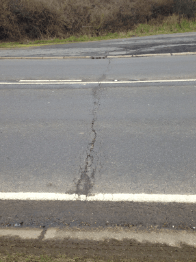
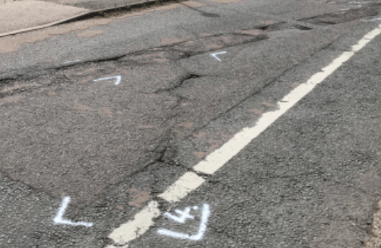
Bitumen-Based Repairs That Work With the Road:
Jointmaster is a bituminous crack repair system designed for compatibility with the surrounding asphalt—ensuring that repairs blend into the existing road surface without causing further stress or failure.
Unlike rigid or incompatible materials, Jointmaster flexes with the pavement, preserving the road’s structural integrity and extending its service life.
With over two decade of proven performance across the UK road network, Jointmaster is now visible on more than 90% of the motorway network, trusted by national contractors and highway authorities alike.
Bituminous. Flexible. Proven. Jointmaster keeps roads performing the way they were designed to.
The Effect of UK Weather on RoadcCacking
Why Timely Crack Repairs Are Essential in Freeze–Thaw Conditions
Maintaining the road network in the UK means dealing with one of its biggest natural threats: the freeze–thaw cycle. This recurring weather pattern is a major cause of surface cracking and pothole formation, particularly during the winter months.
Understanding the Freeze–Thaw Cycle
In a typical UK winter, road surfaces are repeatedly exposed to temperatures rising above and falling below zero. Water enters cracks in the asphalt surface and, when temperatures drop, it freezes and expands—exerting pressure on the surrounding material. When the ice melts, the pressure is released, only for the cycle to repeat. Over time, this constant movement weakens the pavement from within.
Why Cracks Matter
Cracks are more than just surface imperfections—they are entry points for water and oxygen, the two key ingredients for asphalt failure. Once water infiltrates the underlying layers of the road, the freeze–thaw cycle accelerates the damage, leading to:
- Wider and deeper cracks
- Delamination
- Pothole formation
- Premature road failure
The Importance of Timely Repairs
Acting early to seal cracks prevents water from entering the road structure in the first place. This simple, proactive measure:
- Halts the freeze–thaw cycle
- Reduces the risk of potholes
- Preserves the integrity of the road surface
- Delays costly full-depth repairs or resurfacing
Enhanced Road Safety
Cracked and deteriorated roads can cause:
- Skidding hazards during wet or icy conditions
- Vehicle damage from loose material or potholes
- Increased accident risk for drivers and cyclists
Sealing cracks restores a safer, smoother driving surface, improving both traction and user experience.
A Smarter Way to Maintain Roads
Crack repairs are one of the most cost-effective interventions in road maintenance:
- They require minimal disruption to traffic
- They are quick to install using specialist systems like Jointmaster
- They can extend the life of the road by years, deferring major works
Conclusion
The UK’s freeze–thaw cycle is relentless—but it’s also predictable. That’s why planned, preventative crack sealing should be a core part of any highway authority’s maintenance strategy.
Don’t wait for the potholes. Seal the cracks, protect the structure, and save money long-term.


